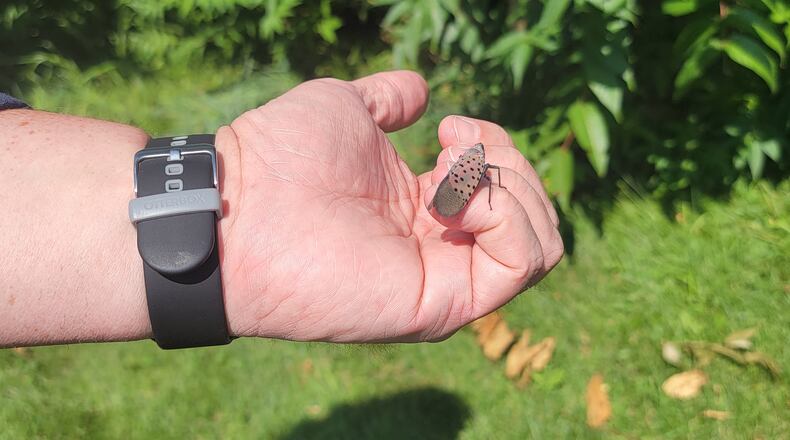This infestation was discovered in early August, adding Lucas County to the list of counties that have reported infestations. This list includes Jefferson, Cuyahoga, Loraine, Erie, Muskingum, Hamilton, Mahoning, and Franklin counties.
I saw the original infestation in 2019 when we traveled to Berks County, Pennsylvania to learn more about this invasive species. I knew then that the biggest problem was going to be for homeowners.
It is true, that they can be very damaging to grapes and hops, even killing the plants if they aren’t controlled. However, this isn’t a big problem for most homeowners. Our problem will be the sooty mold everywhere in the landscape.
Sooty mold is what grows on the honeydew that is excreted by the SLF. The honeydew is a result of the treehopper feeding on the phloem and sucking the sweet sap from the plant.
The SLF treehopper pretty much “squirts” the honeydew from their bodies. I know this because I was standing under a tree getting squirted upon! It was crazy.
When populations take over a tree, there are so many of them eating and pooping that you can stand under the tree and feel the sticky honeydew fall on your skin. One of my colleagues had their sunglasses on their head and they were covered in honeydew.
Sooty mold is a black fungus that grows on the sticky honeydew, wherever it lands. We were at one site and the street under the tree as well as any furniture, cars, and other items under the tree were covered with sooty mold.
The favored tree for SLF is the invasive species, tree-of-heaven. This tree typically grows in scruffy areas that have been cleared and seems to thrive around train tracks.
We visited one site that was a perfect combination of SLF and tree-of-heaven, right by the train tracks. It is suspected that SLF hitches a ride, finds the tree-of-heaven nearby, and makes it their new home.
Learn how to identify tree-of-heaven and keep your eyes peeled for the adults. They are likely all adults by now if they are hiding in the Miami Valley.
That might be easier said than done. My colleague in Lucas County, Amy Stone, who organized the tour, took us to a wild grapevine and said, “See if you can find them.”
I was looking right at them and didn’t see them. They were all over the branches. Once I spotted them for the first time, finding them on other trees was easier.
Credit: Contributed
Credit: Contributed
If you have a maple tree in your landscape, it’s likely you will experience the SLF and the consequential sooty mold sooner or later. There are sprays that can be used on the trees to help knock down populations.
I got to try out the backpack vacuum to suck up the adults. It was surprisingly satisfying to suck them into the canister and then dump them in soapy water!
If you spot what you think might be SLF, contact your local extension office or the Ohio Department of Agriculture. They want to know when they are first found in a county.
We can only hope that they don’t get here too soon!
Pamela Corle-Bennett is the state master gardener volunteer coordinator and horticulture educator for Ohio State University Extension. Contact her by email at bennett.27@osu.edu.
About the Author

